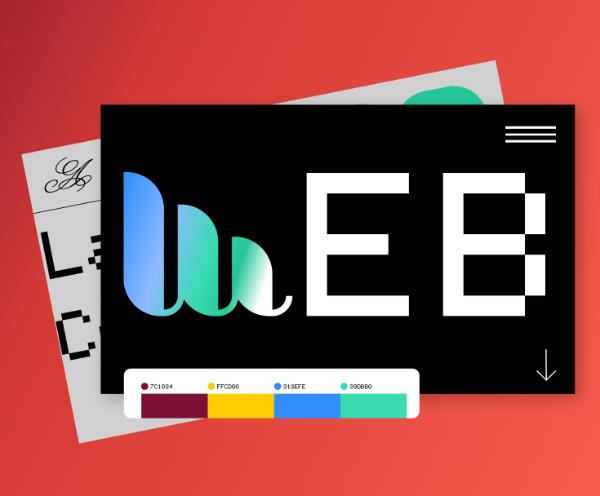Best Design Websites Checklist
Best Design Websites Resources
Best Design Websites
Web developers play a crucial role in the digital age, as they are responsible for creating and maintaining websites that are essential to businesses and organizations. In today’s technology-driven world, having a strong online presence is essential for success, and web developers are the ones who make that possible. In this article, we will explore the role of a web developer, the skills required to be successful in this field, and the importance of web development in today’s society.

Best Design Websites Challenges
Best Design Websites
1. Wix
Wix is a popular website builder that offers a user-friendly interface and a wide range of design templates to choose from. With Wix, small businesses can easily create a professional-looking website without any coding skills. The drag-and-drop editor makes it easy to customize your site to fit your brand and business needs. In addition, Wix offers a free plan that includes Wix branding and a subdomain, making it a great option for small businesses on a tight budget.
2. WordPress
WordPress is one of the most popular content management systems (CMS) in the world, powering millions of websites. While WordPress is known for its flexibility and customization options, it can be a bit intimidating for beginners. However, WordPress.com offers a free plan that allows users to create a basic website with limited customization options. For small businesses looking for more control and flexibility, WordPress.org is a better option, but it requires a hosting plan.
3. Weebly
Weebly is another user-friendly website builder that is perfect for small businesses. With Weebly, users can choose from a wide range of design templates and easily customize their website with drag-and-drop tools. Weebly also offers e-commerce features, making it a great option for small businesses looking to sell products online. While Weebly’s free plan includes Weebly branding and a subdomain, users can upgrade to a paid plan for more features and customization options.
4. Squarespace
Squarespace is a sleek and modern website builder that is perfect for small businesses looking to create a visually stunning website. With Squarespace, users can choose from a range of design templates and customize their site with a drag-and-drop editor. While Squarespace does not offer a free plan, they do offer a 14-day free trial, allowing users to test out the platform before committing to a paid plan.
5. Shopify
Shopify is a popular e-commerce platform that allows small businesses to create an online store. While Shopify is primarily geared towards e-commerce, they also offer a website builder that allows users to create a basic website for their business. With Shopify, users can choose from a range of design templates and customize their site with drag-and-drop tools. While Shopify does not offer a free plan, they do offer a 14-day free trial, allowing users to test out the platform before committing to a paid plan.
While some business owners may attempt to handle SEO on their own, hiring a professional SEO service provider can offer numerous benefits and ensure that your website is optimized effectively. In this article, we will discuss the importance of website SEO services and how they can help your business grow.
1. Enhanced Visibility
One of the primary goals of SEO is to increase the visibility of your website in search engine results. When your website ranks higher in search results, it is more likely to be clicked on by users looking for products or services that you offer. Professional SEO services can help optimize your website for targeted keywords, improve your website’s content and user experience, and implement strategies to increase your website’s visibility in search results.
2. Increased Website Traffic
By improving your website’s visibility in search results, SEO services can help drive more organic traffic to your website. Organic traffic refers to users who find your website through search engines rather than through paid advertisements or social media. Increasing organic traffic can result in more qualified leads and higher conversion rates, ultimately leading to increased sales and revenue for your business.
3. Higher Search Engine Rankings
SEO services can help improve your website’s search engine rankings for targeted keywords. By optimizing your website’s content, meta tags, and technical elements, SEO experts can help your website rank higher in search results for relevant search queries. Higher rankings can lead to increased visibility, more website traffic, and improved brand credibility and recognition.
4. Improved User Experience
User experience is an important factor in SEO, as search engines prioritize websites that provide a positive user experience. Professional SEO services can help improve your website’s navigation, load times, mobile-friendliness, and overall user experience, making it easier for users to find the information they are looking for and navigate your website effectively.
5. Targeted Marketing Strategies
SEO services can help you target specific demographics and market segments through keyword optimization and content strategies. By identifying the keywords and phrases that your target audience is searching for, SEO experts can create targeted marketing campaigns that drive qualified traffic to your website and increase your chances of converting leads into customers.
6. Measurable Results
One of the key benefits of hiring a professional SEO service provider is the ability to track and measure the results of your SEO efforts. Experienced SEO experts use analytics tools to monitor website performance, track keyword rankings, and measure the success of various SEO strategies. By analyzing data and adjusting strategies as needed, SEO professionals can help you achieve your business goals and maximize your return on investment.
7. Competitive Edge
In today’s competitive digital landscape, having a strong SEO strategy is essential for staying ahead of your competitors. By investing in professional SEO services, you can ensure that your website is optimized effectively, helping you outrank your competitors in search results and attract more customers to your business.

Best Design Websites FAQ
Best Design Websites
In today’s digital age, having a visually appealing and user-friendly website is crucial for the success of any business. A well-designed website can help attract new customers, build credibility, and increase conversion rates. However, designing a website is not as simple as it may seem. It requires a strategic and systematic approach to ensure that the final product meets the needs and expectations of both the business and its target audience. In this article, we will discuss the website design process in detail, outlining the key steps involved in creating a successful website.
Step 1: Define the Purpose and Goals
The first step in the website design process is to clearly define the purpose and goals of the website. This involves identifying the target audience, understanding their needs and preferences, and determining the desired outcomes for the website. For example, is the website meant to generate leads, drive sales, provide information, or showcase products and services? By having a clear understanding of the purpose and goals of the website, you can better tailor the design and content to meet these objectives.
Step 2: Conduct Research
Once the purpose and goals of the website have been defined, the next step is to conduct research. This involves analyzing the competition, researching industry trends, and gathering insights into the preferences and behaviors of the target audience. By conducting thorough research, you can gain a better understanding of what works and what doesn’t in your industry, helping you make informed design decisions.
Step 3: Create a Wireframe
After conducting research, the next step in the website design process is to create a wireframe. A wireframe is a visual representation of the layout and structure of the website, showing the placement of various elements such as navigation menus, headers, footers, and content sections. Creating a wireframe allows you to plan the overall design and functionality of the website before moving on to the visual design phase.
Step 4: Design the Visual Elements
Once the wireframe has been finalized, the next step is to design the visual elements of the website. This involves creating a visually appealing and consistent design that reflects the brand identity and resonates with the target audience. Elements such as color scheme, typography, imagery, and layout are carefully considered to create a cohesive and attractive design that conveys the desired message and engages users.
Step 5: Develop the Website
After the visual design has been approved, the next step is to develop the website. This involves coding the design into a functioning website using HTML, CSS, and other programming languages. During the development phase, the website is tested for functionality, responsiveness, and compatibility across different devices and browsers to ensure a seamless user experience.
Step 6: Test and Optimize
Once the website has been developed, it is essential to test and optimize its performance. This involves conducting usability tests to identify any usability issues, testing load times to ensure fast page speeds, and optimizing the website for search engines to improve visibility and accessibility. By testing and optimizing the website, you can ensure that it meets the needs and expectations of users, leading to better engagement and conversions.
Step 7: Launch and Monitor
The final step in the website design process is to launch the website and monitor its performance. This involves deploying the website to a live server, promoting it to the target audience, and tracking key metrics such as traffic, engagement, and conversions. By monitoring the performance of the website, you can identify areas for improvement and make informed decisions to optimize its effectiveness over time.


